Chmod Table Permissions

Modifying File Permissions With Chmod Command In Gnu Linux Openforums

Ectzbrjpkaoq7m

Chmod Wikipedia
.jpg)
Chmod Write Access Folder Download

Give Write Access Chmod 644

Umask Sharing Is Caring
The possible values are:.

Chmod table permissions. Changing File Permissions - Chmod. There are two basic ways of using chmod to change file permissions:. The op part of a symbolic mode is an operator that tells chmod to turn the permissions on or off.
The tool will provide you with an octal code that corresponds to these permissions which can then be applied to relevant directories and files with chmod. This will be a number between 0 and 7 (0 representing no permissions and 7 representing full read, write, and execute permissions) for each category. The chmod command in Linux/Unix is abbreviated as CHange MODe.
-turns off a permission. Adding the numbers in each section results in permissions of 664. The exact command is.
9 Comments Originally posted October 13, 14. You can also simply navigate to the folder (Using cd command) where you want to apply the permissions to all of the folder contents and run the following command. The table below gives numbers for all for permissions types.
Chmod 755 -R /opt/lampp/htdocs will recursively set the permissions. Run those together and pass them to chmod like this:. There’s no way around file permissions on the Raspberry Pi.
So for example, using the table above, we can see that the file permissions -rwxrwxrwx can be represented in octal as 777. In this quick tutorial, we will see how we can use chmod command in an Ubuntu machine to find, modify and remove user permissions from specific files which exist on the user’s file system. You can use the chmodcommand to set permissions in either of two modes:.
Chmod is used to make changes:. You must be superuser or the owner of a file or directory to change its permissions. Here is a copy of my command line.
Can anyone explain what I am doing wrong?. For example, let’s say you want to set the permissions for file.txt as rwxr–r–. Chmod says it is changing it but the file permissions remain the same.
If you need to list a file's permissions, use the ls command. Permissions defines the permissions for the owner of the file (the "user"), members of the group who owns the file (the "group"), and anyone else ("others"). Sets UID, sets read, write, and execute permissions for user, and sets read and execute permissions for Group and Others:.
I hope this article has helped you in applying the chmod command to a folder and all of its contents. Useful Permission Commands Command What It Does ls …. This tech-recipe describes the more complex octal chmod syntax.
The chmod command is used to alter the permissions of a file. The first digit specifies owner permissions, the second digit specifies group permissions, and the third digit specifies other permissions. Adding the read, write and execute to the user (or owner of the file) chmod go+r file:.
The middle digit represents the permissions for the group members. Adding the read permission to the group and the others category. Using chmod command is very easy if you know what permissions you have to set on a file.
755, etc.) What am I to type in terminal to know the chmod of the file or folder I want?. The owner of a file can change the permissions for user (u), group (g), or others (o) by adding (+) or subtracting (-) the read, write, and execute permissions. CHMOD is used to change permissions of a file.
The chmod command can accept numeric integers, such as 0664, which relate to user permissions. Table 10-69 lists the syntax options for the chmod command. For the owner to have read, write, and execute, we would have a value of 7.
See this to help create these, if you wish I will cover using chmod. Additionally server-side languages provide functions that are roughly analogous to chmod in terms of operation using absolute notation. The chmodcommand enables you to change the permissions on a file.
Let’s play through various conditions so that we can master basic chmod commands which can make our everyday life easier with Ubuntu. Chmod u=rx file (Give the owner rx permissions, not w) chmod go-rwx file (Deny rwx permission for group, others) chmod g+w file (Give write permission to the group) chmod a+x file1 file2 (Give execute permission to everybody) chmod g+rx,o+x file (OK to combine like this with a comma). Set the permissions for a file or directory by using the chmod command.
The chmod command in various UNIX flavors such as Solaris, Linux, Mac OSX, and others, allows the access controls of a file or directory to be set. Table 10-69 Options for the chmod command This command accepts a file name or multiple file names separated by spaces. Who are we changing the permission for?.
Sets read, write, and execute permissions for user, and sets read permission for Group and Others:. Group – The Group permissions apply only to the group that has been assigned to the file or directory, they will not effect the actions of other users. There's no way to set the permissions for files automatically in only this directory that are created after you set the permissions, but you could change your system-wide default file permissions with by setting umask 022.
View (u)ser, (g)roup and (o)thers permissions for chmod 600 (chmod a+rwx,u-x,g-rwx,o-rwx) or use free online chmod calculator to modify permissions easily. The table below gives numbers for all for permissions types. File access permissions can be modified via the chmod command.
= turns on the specified permissions and turns off all others. The command can accept one or more files and/or directories separated by space as arguments. Mykyta Dolmatov / Getty Images.
Absolute(Numeric) Mode In this mode, file permissions are not represented as characters but a three-digit octal number. See the tech-recipe Set UNIX file access permissions with chmod for the basics of file permissions and chmod. Removing the read permission for the owner of the file.
Chmod permissions path chmod has permission arguments that are made up of 3 components. PERMISSION COMMAND U G W rwx rwx rwx chmod 777 filename rwx rwx r-x chmod 775 filename rwx r-x r-x chmod 755 filename rw- rw- r-- chmod 664 filename rw- r-- r-- chmod 644 filename U = User G = Group W = World r = Readable w = writable x = executable - = no permission. Absolute Mode -Use numbers to represent file permissions (the method most commonly used to set permissions).
By using this command, we can set the read, write, and execute permissions for all three of the permission groups (Owner, Group and Other) in Linux. As such, all we need to do is enter the following command to change the file permissions. Using chmod with Absolute Permissions The second way to modify permissions with the chmod command is to use a number to specify each set of permissions for the file.
The name speaks for itself. Each row has 2 examples, one for setting that permission for a file, and one for a directory named ‘dir’. Read and execute would have 5.
Here's an example using the testfile. User Group Other Read 4 4 4 Write 2 2 2 Execute 1 1 1 U G O X X X Chmods:. Add the octal numbers for the permissions you want.
Chmod.(change mode) is a widely used command to change the permissions of files and directories.It allows the setting of user, group and other bits which each define what rights each classification of user has over the files. 1 = execute permission. You need to know a handful of commands for working with permissions.
Bash, Shell, Terminal, Command Line cheat sheets linux Ubuntu. We add up the numbers associated with the type of permissions we would like to grant for each category. Sets sticky bit, sets read, write, and execute permissions for owner, and sets read and execute permissions for group and others (this suggests that the script be retained in memory) chmod 4755 setCtrls.sh:.
Chmod permissions filename There are 2 ways to use the command - 1. Each of the three digits in our chmod statement — 7, 7, 0 — corresponds to Owner, Group, and Others rights. Linux chmod command is one of the most commonly used commands especially by system administrators when assigning modifying file and folder permissions.
Linux Permissions are a great set of rules which. By referring to the above table, you can see that the numeric representation of this permission is 744. For example, if you want the owner to have all the permissions and no permissions for the group and public, you need to set the permission 700 in absolute mode:.
Chmod Calculator is a free utility to calculate the numeric (octal) or symbolic value for a set of file or folder permissions in Linux servers. The chmod command changes the access permissions of files and folders. The permissions read, write, and execute correspond to the letters r, w, and x in the following way:.
We will use chmod(1) (which means “change mode”) to set the permissions on the example file. This type of restriction is useful for effective file/folder management, securing system and providing a level …. ~$ sudo chmod -v u+x ex01 mode of 'ex01' changed from 0600 (rw-----) to 0700 (rwx-----) ~$ ls -l ex01 -rw----- 1 user user Feb 6 21:50 ex01.
The highly productive Linux system offers various levels of permission to ensure that the user has enough ways to interact with files and directories. There are 2 ways to use the command - Absolute mode;. Chmod 700 filename You can do the same in symbolic mode.
Chmod changes the file mode bits of each given file according to mode, which can be either a symbolic representation of changes to make, or an octal number representing the bit pattern for the new mode bits. The chmod command allows you to change the permissions on a file using either a symbolic or numeric mode or a reference file. The leftmost digit represents the permissions for the owner.
777 = rwxrwxrwx 755 = rwxr-xr-x 644 = rw-r--r-- 700 = rwx------ 750 = rwxr-x---. The chmod command is used to change the various permission bits of a file or directory. Chmod -R XXX.
Adding the read and execute permissions to the others category:. It may be used to add or remove permissions symbolically. The name chmod is short for “change mode”.
CHMOD Permissions Reference Chart by David · September 18, 12 This is how I remember permissions and most likely, it will help you remember it as well. I can look in properties of this folder but I want to get properties fast and in digits (octal, e.g. The letter or letters representing the owner (u), group (g), other (o) or all (a) followed by a + for adding permissions or a – for taking away permissions and then the letter for the permission (r for read, w for write and x for execute).In the above example, I added the execute permission for all users.
The following table shows a list. The symbolic method and the absolute form. To change permissions on a file or directory we use a command called chmod It stands for change file mode bits which is a bit of a mouthfull but think of the mode bits as the permission indicators.
We will explain the modes in more detail later in this article. In this mode, file permissions are not represented as characters but a three-digit octal number. The rightmost digit represents the permissions for the others.
+ turns on a permission. Rwxrwxrwx ) to see its value in other formats. Owner – The Owner permissions apply only the owner of the file or directory, they will not impact the actions of other users.;.
You have to understand them and know how to use them, or you won’t get much done with Linux. It’s usually used when installing and configuring various services and features in a Linux system. Running chmod 770 on project-a gives us the permission set we want:.
The permission part of a symbolic mode is any combination of the following:. The syntax is as follows:. Chmod command understanding how-to grant file permissions why i said title like that, because chmod command used for changing file mode bits.
We can use two ways of calling chmod, symbolic or octal notation. For example, to add execute permissions for the owner of a file you would run:. Chmod stands for “ Change Mode ” and is used to modify the permissions of files and directories in a Linux based system.
Rwxrwx--- How does 770 correspond to rwxrwx---?. To meet our goal, we will run:. The command takes the general form:.
How to use Check the desired boxes or directly enter a valid numeric value (e.g. If a “–” is in the place of the r, w, or x, that permission is denied. $ chmod 744 file.txt Set Permission to All Files in a Directory.
To change file and directory permissions, use the command chmod (change mode). Select the permissions you require below. View (u)ser, (g)roup and (o)thers permissions for chmod 750 (chmod a+rwx,g-w,o-rwx) or use free online chmod calculator to modify permissions easily.
File/Directory permission is either Read or Write or executable for either user or group or others. 777 ) or symbolic notation (e.g. Each permission is assigned a value, as the following table shows, and the total of each set of permissions provides a number for that set.
The chmod command, like other commands, can be executed from the command line or through a script file. Another way to use chmod is to provide the permissions you wish to give to the owner, group, and others as a three-digit number. Sudo chmod XXX -R directory-location.
Each file and directory has three user based permission groups:. Users can simply modify file permissions using the chmod (change mode) command.

Solved 3 Use Chmod With Octal Number To Forbid All Permi Chegg Com

Understanding Linux Permissions And Chmod Usage

Use Of Chmod Command In Linux Devopsdex

Chmod Command In Unix Unix File Permissions Chmod With Examples Chwn Command Chgrp Command Unmask

Understanding Linux Permissions And Chmod Usage
Q Tbn 3aand9gcs Trmaopb41lzfo2wl Mi6olorurkywaddbudhnw Ne1mor3ct Usqp Cau

Linux File Permissions Know The Reason Behind That Chmod 777 By Abhishek Chandra Medium

Linux Unix Permissions And Attributes Linuxsecrets

Chmod Permissions Yaman S Website

Linux Permissions Guide Plex Support

Linux Chmod Command Linuxfordevices

Understanding File Permissions In Unix Or Linux And Modify Using Chmod

How To Use Chmod Command In Linux Explained With Examples

Use Of Chmod Command In Linux Devopsdex

How To Change Existing Permission Numerically

Linux Permissions Tables Reffffference

An Introduction To Linux File Permissions Boolean World
Q Tbn 3aand9gctcuilq Yqqxkzwxdz3pdmp0f Jyy70pg6dtr6qeavirn8zjzor Usqp Cau

Solved Unix File Permission Help Please Answer The Quest Chegg Com

How To Set File Permissions In Mac Os X Macinstruct

Workbook 4 File Ownerships And Permissions Ppt Video Online Download

Pin By Dr Stefan Gruenwald On Cheatsheets Computer Science Programming Learn Javascript Linux Operating System

Knowledge Is Power Ubuntu Linux Part 2 Song Cho Medium

Chmod 777 A Definitive Guide To File Permissions

Managing Linux Permissions

An Introduction To Linux File Permissions Boolean World
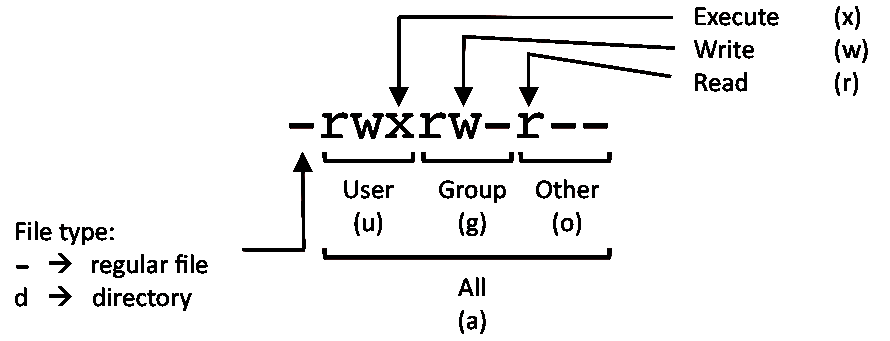
Linux Commands Cheat Sheet Linux Training Academy
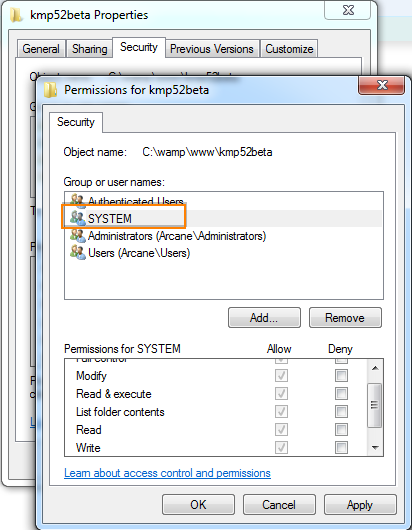
Give Write Access Chmod 755

How To Use Linux File Permissions And Ownership On Alibaba Cloud Ecs Dzone Open Source

File Permission Meanings Stack Overflow

Permissions Red Hat Enterprise Rhcsa Rhcse Preparation 0 0 1 Documentation

Linux Permissions Guide Plex Support

How To Set And Manage File Permission In Linux Part 1

How To Change Permissions And Owners Via Linux Command Line

Posted Withrepost Terminalworld It Is The First Column In The Output Of Ls L Command Which Tells All About The Linux Linux Permissions Software Engineer

Ownership And Permissions

19b Permissions

Linux File Permissions Programmer Sought

Understanding File Permissions

How To Use Chmod Command In Linux Explained With Examples

How To Use Chmod Command In Linux Explained With Examples

Restore Executable Permission To Chmod Command In Linux Ostechnix Mdeditor

Solved This Is In Linux While Logged In As A Regular Use Chegg Com
.png)
File Permissions In Linux Unix With Example

Unix Chmod Cheat Sheet Computer Science Programming Learn Javascript Linux Operating System

An Introduction To Linux File Permissions Boolean World
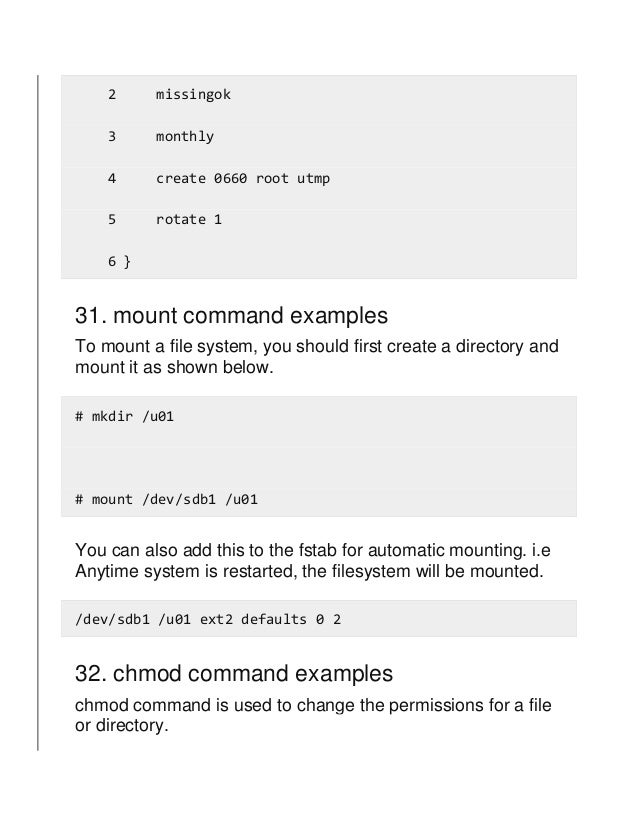
Give Write Access Chmod Unix

Chmod Command In Linux File Permissions Designlinux

File And Directory Security Solaris Advanced User S Guide

Srgoc Linux

Unix Permissions

Linux File Permissions Complete Guide Devconnected

Understanding Permissions Apple Training Series Mac Os X System Administration Reference Volume 1

Unix Permissions Explained
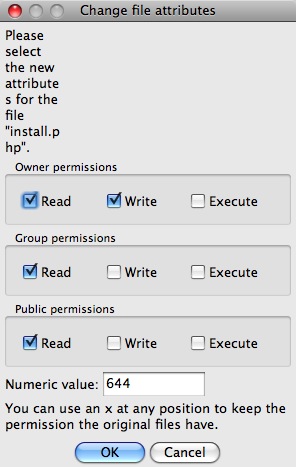
Linux Chmod How To Make A Perl Script Executable Alvinalexander Com
Why Does Doing Chmod 777 Not Make A File Executable But Chmod 755 Does Isn T 777 Greater Than 755 Quora

Linux Users And Groups Linode

How To Use Unix File Permissions To Increase Security Developer Drive

Understand Linux File Permissions Using Chmod And Chown Commands Programming Tips For Versatile Coders
2

Chmod Help
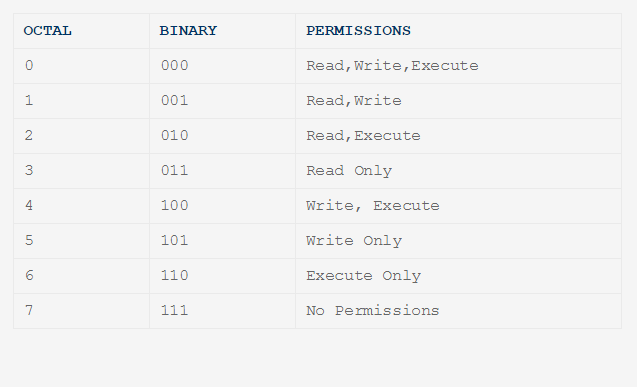
Chmod Directory Read Write And Type

System Integrity Using Files Permissions Processes Root And Sudo Teklimbu S Weblog

File Permissions In Linux Unix Vk9 Security

How To Use Chmod Command In Linux Explained With Examples

Solved If The File Is An Executable Type Then You Need T Chegg Com

Linux File Permissions Know The Reason Behind That Chmod 777 By Abhishek Chandra Medium

Understanding Linux Permissions And Chmod Usage

Ownership And Permissions

Linux Permissions Explained Linux Hint

Suse Linux Enterprise Desktop Administration Chapter 9 Manage Users Groups And Permissions Ppt Download

Chmod 777 755 655 644 And More Permissions Linux Files Tutorials

How To Use Chmod Command In Linux Explained With Examples

Class File Tree Structure Home Csc156 Yourusername Chegg Com

An Introduction To Linux Permissions Digitalocean

Linux Permissions Guide Plex Support
Verizon Droid Turbo Has Been Rooted Page 2 Droidforums Net Android Forums News

Permissions In Linux Geeksforgeeks

Learning The Shell Lesson 9 Permissions

How To Set File Permissions In Mac Os X Macinstruct
1

Chmod 555

Ownership And Permissions

Unix Commands Changing Permissions Dreamhost Knowledge Base

Changing File Permissions In Linux The Chmod Command By Saswat Subhajyoti Mallick Medium

File Security

Linux Chmod Command Linuxfordevices

Ownership And Permissions
Linux Chmod Tips

14 Permission And Modification Times

An Introduction To Linux File Permissions Boolean World
Q Tbn 3aand9gcs Trmaopb41lzfo2wl Mi6olorurkywaddbudhnw Ne1mor3ct Usqp Cau

Changing File Permissions Wordpress Org

Numeric Permissions Table Linux Chmod Command Linux Permissions
.png)
File Permissions In Linux Unix With Example

Changing Permissions On A File In Linux Mvps Net Blog Mvps Net Tutorials

Execute Vs Read Bit How Do Directory Permissions In Linux Work Unix Linux Stack Exchange

Unix Linux Os X File Permissions



